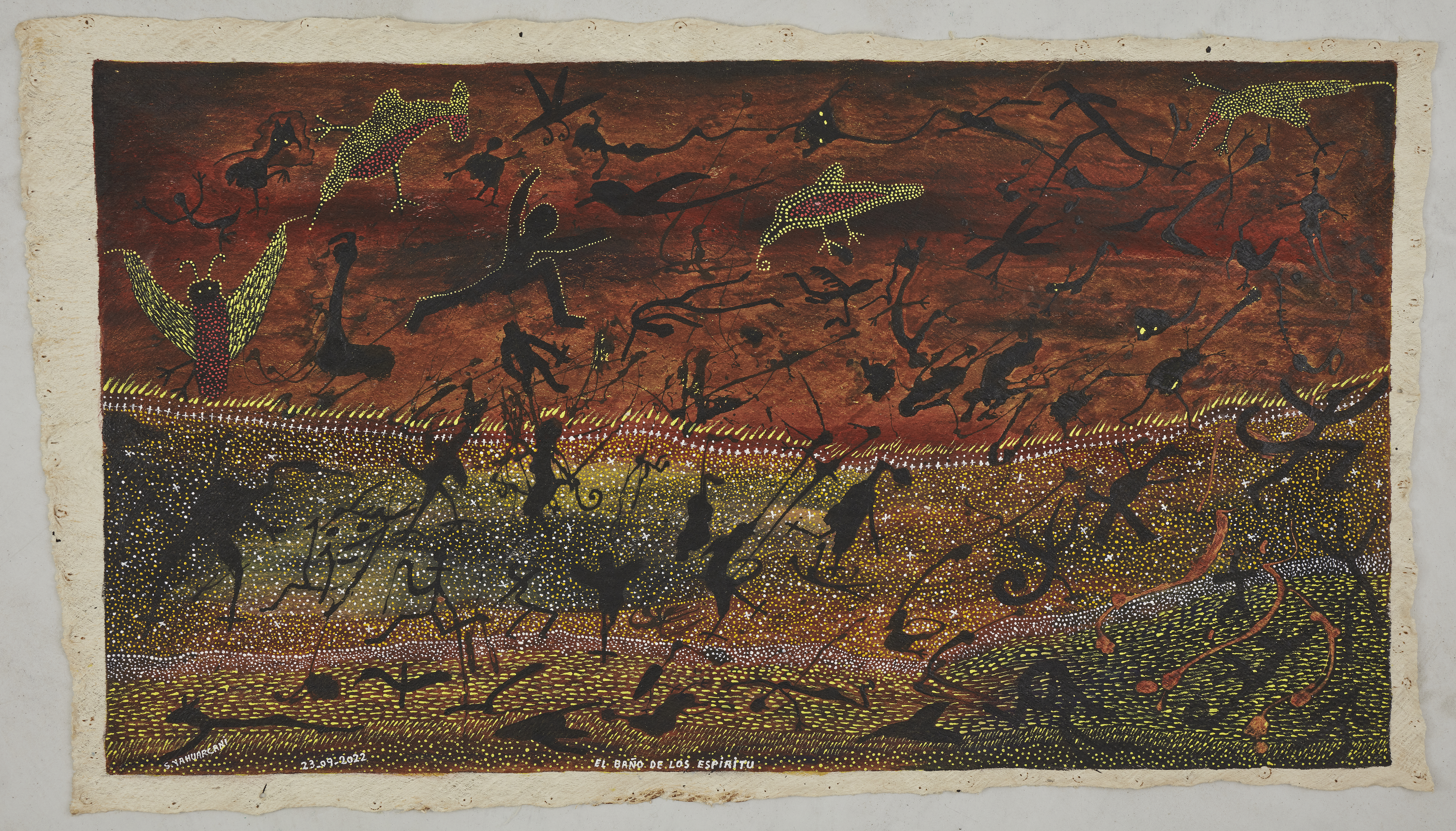Santiago Yahuarcani pays tribute to Amazonian ontologies and beliefs in his paintings and sculptures. As a leader of the Huitoto peoples, Yahuarcani strives to preserve the intricate, spiritual belief systems of his community while offering a nuanced critique of colonial extraction in present-day Peru. Yahuarcani reflects on the genocide and displacement, now known as the Putumayo genocide, that occurred with the arrival of colonising powers in the Amazon in the late 19th to early 20th century, when indigenous communities were forced into slavery by the Peruvian Amazon Company during the rubber boom. Focused primarily on portraying Huitoto mythical tales and oral histories passed down through generations, his works cement the presence and resilience of indigenous communities as they are showcased internationally. Yahuarcani, whose parents are survivors of the colonial atrocities, sees his artistic practice as a means of sharing and safeguarding these indigenous knowledge systems, which are at risk of disappearing as newer generations migrate from their ancestral lands.
In El baño de los espíritus (2022), translated as ‘The Bath of the Spirits’, Yahuarcani employs the Huitoto trope that associates an ‘owner’ or ‘spirit’ with specific plants, situations or animals found in the forest. Rather than portraying these spirits with their conventional attributes, he grants them human-like qualities, depicting them as simply taking a bath in the river and playfully enjoying nature. Utilising ancestral memory and indigenous forms of knowledge, Yahuarcani paints on yanchama, a cloth crafted from the inner bark of fig trees, using natural dye to commemorate the resilience of indigenous people through mythical narratives. Within the context of mass deforestation and oil spills on indigenous lands, Yahuarcani’s initially humoristic approach becomes an act of protest as he illustrates a nostalgic scenery of what once was. Challenging Western modes of logic and individualism, Yahuarcani encourages us to explore alternative ways of thinking and to foster a heightened awareness of one’s collective place in the universe and respective communities.
Currently possessing several ancient, hand-painted Andean textiles, as well as Polynesian, Tongan, Ugandan and Fijian printed and painted works on bark cloth, The Whitworth aims to provide a more comprehensive account of indigenous history to its audience. Yahuarcani’s work speaks to the gallery’s collection and concerns, providing a contemporary perspective on traditional Andean textiles through the realm of fine art.


